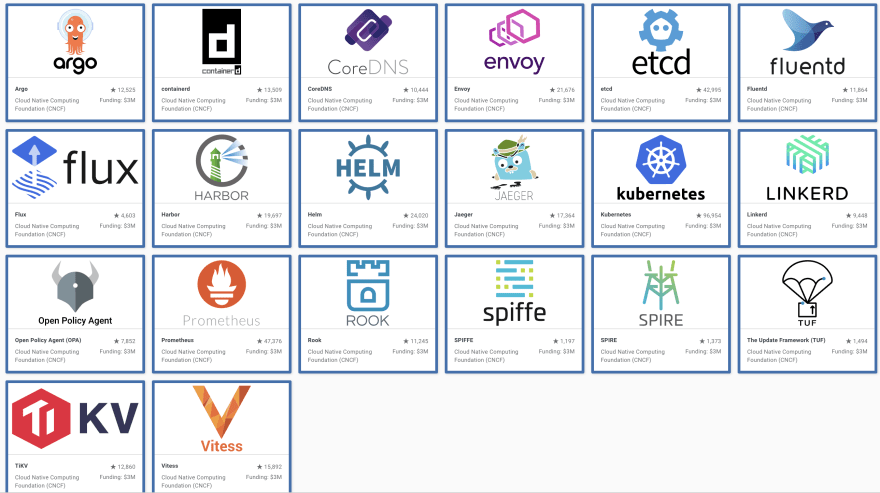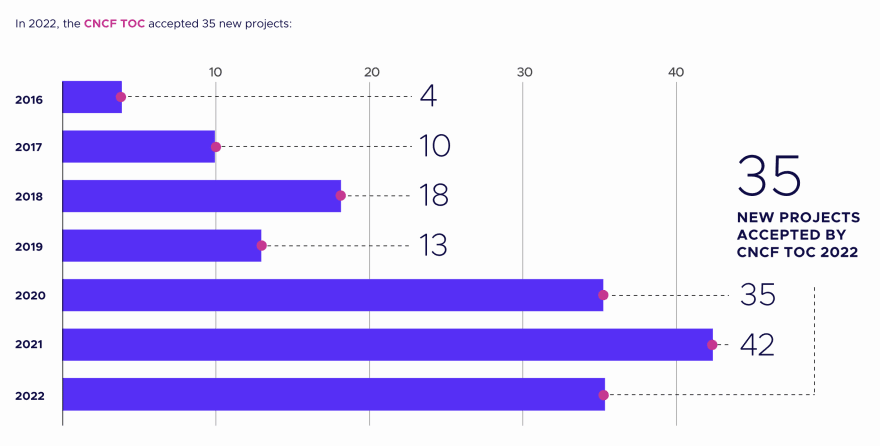The Cloud Native Computing Foundation (CNCF) is a non-profit organization founded in 2015 with the goal of advancing the development and adoption of cloud-native technologies. The CNCF Landscape is a comprehensive and interactive tool that provides an overview of the cloud-native ecosystem, including open-source projects, companies, and initiatives. In this beginner's guide, we will explore what the CNCF Landscape is, how to use it, the number of projects available, and how it works.
What is the CNCF Landscape?
The CNCF Landscape is a dynamic and interactive web-based tool that provides an overview of the cloud-native ecosystem. It includes information about different projects, including open-source technologies, companies, and initiatives. The Landscape is constantly evolving and is updated regularly to reflect the latest developments in the cloud-native space.
The Landscape is divided into different categories, including orchestration and management, container runtimes, observability and analysis, networking and security, storage and databases, developer tools, and others. Each category contains a range of different projects and initiatives, providing a comprehensive overview of the cloud-native ecosystem.
How to use the CNCF Landscape?
The CNCF Landscape is designed to be user-friendly and easy to navigate. Users can access the Landscape from the CNCF website and explore the different categories and projects. Each project in the Landscape includes a brief description, links to its website and source code, and other relevant information.
Users can filter the Landscape by different criteria, including project maturity level, whether a project is hosted by the CNCF, and whether it has reached a particular stage of development. This makes it easy to find relevant projects and technologies based on specific requirements and use cases.
The Landscape also includes a search bar that allows users to search for specific projects or keywords. Users can also bookmark their favorite projects and share them with others using the URL.
How many projects are available in the CNCF Landscape?
At present, there are 141 listed projects under the CNCF which are splited into four tiers.
- Sandbox — Experimental projects not yet widely tested in production on the bleeding edge of technology
- Incubating — Projects used successfully in production by a small number of users with a healthy pool of contributors
- Graduated — Project considered stable, widely adopted, and production ready, attracting thousands of contributors
- Archived — Projects that have reached the end of their lifecycle and have become inactive.
Today, CNCF has over 850 participating organizations, including the world's largest public and private cloud companies, along with the world's most innovative software companies and end user organizations.
How does the CNCF Landscape work?
The CNCF Landscape is an open and community-driven project. The Landscape is built using a range of different open-source technologies, including Vue.js, GraphQL, and Postgres.
The Landscape is maintained by a team of volunteers from the CNCF community who review and curate the different projects and initiatives included in the Landscape. New projects can be submitted for inclusion in the Landscape using a simple online form, and the CNCF community reviews these submissions and decides whether to include them in the Landscape.
The Landscape is also integrated with other CNCF projects and initiatives, including the CNCF End User Community and the Kubernetes Community. This integration helps to ensure that the Landscape reflects the latest developments in the cloud-native ecosystem and provides a comprehensive overview of the different projects and initiatives available.
What are CNCF Graduated Projects?
CNCF Graduated projects are open-source projects that have gone through a rigorous evaluation process and have been determined to have met the CNCF's criteria for maturity, sustainability, and community adoption. These projects are considered to be stable and production-ready, and have demonstrated a high level of adoption and support from the community.
Graduated projects are the highest level of recognition given by the CNCF, and they are seen as industry standards for cloud-native technologies. These projects are expected to have a high degree of interoperability with other cloud-native technologies, and they are often used as building blocks for larger, more complex cloud-native architectures.
To become a CNCF Graduated project, a project must first be accepted into the CNCF as an incubating project. Incubating projects are those that are actively being developed and have demonstrated potential for adoption and community support.
Once accepted as an incubating project, the project undergoes a rigorous evaluation process, which includes technical due diligence, community review, and validation of the project's maturity and sustainability. The project must also demonstrate a high level of adoption and support from the community.
If the project successfully completes the evaluation process, it can be promoted to a graduated project. Graduated projects are expected to continue to evolve and innovate, but they are considered to be stable and production-ready, with a high degree of interoperability with other cloud-native technologies.
Some examples of CNCF Graduated projects include Kubernetes, Prometheus, Envoy, and CoreDNS. These projects are widely used by organizations of all sizes and are considered to be industry standards for cloud-native technologies.
In summary, CNCF Graduated projects are open-source projects that have demonstrated a high degree of maturity, sustainability, and community adoption. These projects are considered to be stable and production-ready, and they are often used as building blocks for larger, more complex cloud-native architectures.
Conclusion
The CNCF Landscape is an essential tool for anyone interested in cloud-native technologies. It provides a comprehensive overview of the cloud-native ecosystem, including open-source projects, companies, and initiatives. The Landscape is designed to be user-friendly and easy to navigate, and users can filter the Landscape by different criteria to find relevant projects based on specific requirements and use cases.
As the cloud-native ecosystem continues to evolve, the CNCF Landscape will remain an important resource for developers, engineers, and organizations looking to stay up-to-date with the latest developments in cloud-native technology.










Top comments (0)